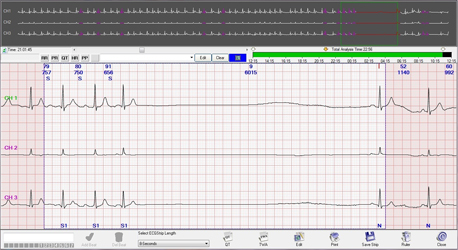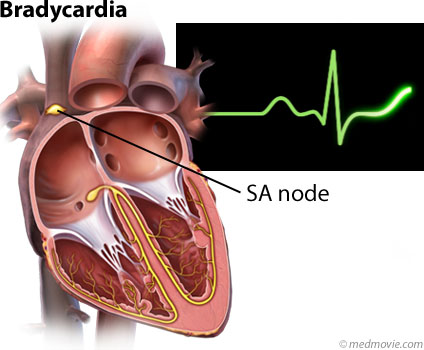


While your dog is healing from this condition, you will need to keep its physical activity to a minimum.

Attempts to manage an abnormally fast or abnormally slow heart rate syndrome medically, without prior pacemaker implantation, carry a significant risk of worsening the extremes of the abnormally fast or abnormally slow heart rate syndrome.

Only patients showing clinical signs need treatment, and only patients requiring electrophysiologic testing of the heart, or implantation of an artificial pacemaker will need to be hospitalized.ĭogs that do not respond to medical therapy, or have adverse medical side effects to therapy, and/or dogs with abnormally fast/abnormally slow heart rate syndrome will need to have an artificial pacemaker implanted. Hence, if there is a heart murmur, disease of any of the heart’s valves should first be ruled out. Dogs with SSS generally will have no response, or will have an incomplete response to the atropine.Īn ECG may be indicated in certain breeds which are predisposed to SSS, as these same breeds are often predisposed to other diseases of the heart valves (the valves that separate the four chambers of the heart). This test uses the drug atropine to stimulate the firing action (sending electrical impulses out) of the SA Node. The history you provide may give your veterinarian clues as to which organs are being affected secondarily.Ī provocative atropine response test may be done to assess sinus node function. You will need to give your doctor a thorough history of your dog's health, including a background history and onset of symptoms, and possible incidents or recent health conditions that might have precipitated this condition. Your veterinarian will perform a complete physical exam, including a blood chemical profile, a complete blood count, a urinalysis, and an electrolyte panel to verify proper organ function. Some of the suspected relationships to SSS are genetic, since some breeds, like the miniature schnauzer, appear to be predisposed another cause is heart disease that is cutting off the blood supply to or from the heart and disrupting normal heart function, including the electrical functionality and, cancer in the thoracic or pulmonary (both refer to the chest) region may also lead to SSS. The causes for this condition are mostly unknown. Abnormally fast, or abnormally slow heart rate.Generally, the symptoms that will present are: Some dogs will not show any symptoms of sick sinus syndrome, especially if they tend to be fairly inactive under normal circumstances. If you would like to learn more about how this disease affects cats, please visit this page in the PetMD health library. This syndrome can affect both dogs and cats. Clinical signs of sick sinus syndrome in animals will become apparent when organs begin to dysfunction because they are not receiving a normal amount of blood supply. Tachycardia-bradycardia syndrome, in which the heart beats too slowly, and then too quickly, is a variant of sick sinus syndrome. On an electrocardiogram (ECG), the irregular contraction of the heart (arrhythmia) will be visible. Pacemaker refers to the generation of electrical impulses within the muscle tissue, which set the pace for the heart's rhythm. Sick sinus syndrome will also affect subsidiary (backup) pacemakers and the specialized conduction system of the heart. It is also a disorder of the conduction of the electrical impulse out of the sinus node. Sick sinus syndrome (SSS) is a disorder of the heart’s electrical impulse formation within the sinus node. The sinoatrial node (SA Node, or SAN), also called the sinus node, is the initiator of electrical impulses within the heart, triggering the heart to beat, or contract, by firing off electrical surges.


 0 kommentar(er)
0 kommentar(er)
